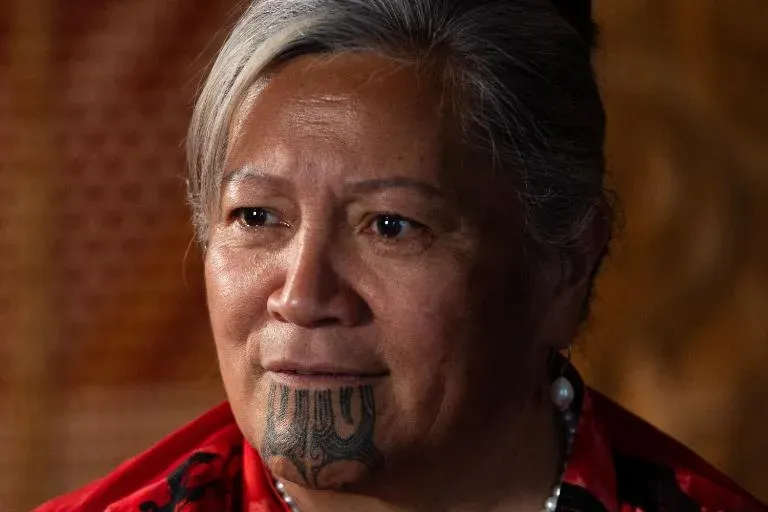There is a lot of talk about various issues relating to the Israeli/Hamas war that I will try to address here. I will attempt wherever possible to steer clear of opinions and refer to facts.
I shall start by looking at some history. The problem with this (as with climate change) is what do you take as your starting date? In the case of Palestine/Israel we could go back thousands of years:
Political Zionism based its claim to Palestine as the Jewish homeland on the various Jewish kingdoms that had existed in parts of Palestine for several hundred years after 1200 BC. The land was subsequently conquered and ruled by a number of empires after 722 BC, including the Assyrians (circa 722 BC), the Babylonians (circa 670 BC), the Persians (circa 530 BC), the Greeks (circa 331 BC) and the Romans (61 BC). The name Israel finds its origins in the Israelite kingdom of the Old Testament, while the term Palaestina dates from the Roman conquest. Various changes of control took place until 1517 when the region became ruled by the Ottoman Turks.
https://scholarship.law.bu.edu/faculty_scholarship/587
With Palestine being part of the Ottoman empire for 400 years, it is appropriate to progress through to 1914 when the First World War began.
Palestine had been part of the Turkish Ottoman Empire for almost four centuries, and had been experiencing the first stirrings of Arab nationalism. The small intellectual class – led by teachers, artists, army officers and writers – were issuing appeals for more Arab culture and greater autonomy for the Arab provinces. The Palestinian Arabs were predominately Muslims, with a significant and prosperous Christian minority. They were largely an agrarian people, cultivating the Galilee, the coastal plain and the inland hill country, with the rest living in such cities and towns as Jerusalem, Gaza, Jaffa and Haifa. In the Galilee and the southern desert were nomadic Bedouin Arabs. Many of Palestine’s 85,000 Jews were living in Jerusalem, where they formed a majority.
E. Rogan, (2009) The Arabs: A History, New York: Basic Books, 149-174. Abu-Lughod 141.
On 16 May 1916, Great Britain and France concluded a secret agreement – 6 the Sykes-Picot Agreement, named after the two negotiators, Sir Mark Sykes of Britain and Charles Georges-Picot of France – whereby the two countries divided up the Arab provinces of the Ottoman Empire into respective British and French zones of influence which would take effect after the defeat of the Ottomans. The Agreement would give Britain control over much of Mesopotamia, northern Arabia, Trans-Jordan and Gaza, while France would receive Cilicia, the Syrian coast, Mosul, Aleppo and Damascus. Palestine would come under a vaguely defined ? international administration.
“The Sykes-Picot Agreement,” in JN Moore, (ed.) The Arab-Israeli Conflict (Princeton: American Society of International Law, 1974), vol. III, 25-28.
Control of the regions known as Palestine and Trans-Jordan then passed to Britain under a mandate. Palestine was not a state or a country, having moved from being a region of the Ottoman Empire to a region ruled by the UK under a mandate.
In July 1922, the Council of the League of Nations formalized the entrustment of the Palestine Mandate to Great Britain. The Council decision had five important features. First, it created a separate Mandate over Trans-Jordan, where Great Britain installed Abdullah, son of the Sherif of Mecca, as King. The Jordan River and the Dead Sea became the primary natural and political boundary between Palestine and Trans-Jordan. Second, Britain was also given Mandate authority over Iraq (where it placed Faisal, another son of the Sherif, as King), while France was awarded Syria and Lebanon. Third, the Mandate for Palestine incorporated the language of the Balfour Declaration, promising a national home for the Jewish people in Palestine provided that the civil and religious rights of the non-Jewish communities in Palestine were not prejudiced. It also recognized the rights of an appropriate Jewish agency ‘to operate as a public body to assist the Mandatory in the establishment of a Jewish national home, and encouraged Jewish immigration and the close settlement by Jews of the lands’. Fourth, the Mandate for Palestine did not specifically use the word Arab; ‘the Palestinians Arabs were referred to only as non-Jews’. And fifth, Great Britain undertook to promote the economic and political development of the country and to protect its religious and holy places.
“The Mandate of Palestine Confirmed by the Council of the League of Nations”, in JN Moore (ed.) The Arab-Israeli Conflict, Princeton: American Society of International Law, 1974, vol. III, 75-84; H. Sachar, A History of Israel (3rd ed.), New York: Alfred A. Knopf, 2007, 129.
With the British Mandate authority in Palestine favourable to its settlement goals, the Zionist movement began to organize the migration of European Jews as part of its project to build a homeland in Palestine. Through the 1920s and 1930s (particularly following Adolf Hitler‘s rise to power in Germany in 1933), rising rates of immigration saw the Jewish population in Palestine surge from 56,000 in 1917 to 175,000 in 1931 to 460,000 by 1939. In the inter-war period, the overall economy of Mandate Palestine grew with Jewish immigration and capital, along with Mandate investment in infrastructure. However, two distinct societies and economies were emerging, with separate Jewish and Palestinian educational systems, industries, cultures, cities and neighbourhoods. The Yishuv – the Jewish community in Palestine – established its own institutions to promote autonomous development, such as the Jewish Agency, the Jewish National Fund, the Histadrut (the Jewish trade union) and the Mapai party. Among the Palestinians, the Arab Executive and the Supreme Muslim Council, led by the Grand Mufti of Jerusalem, Haj Amin al-Husseini, became their primary representative organs, although they were weakened by leadership struggles between the two leading Arab families in Jerusalem, the Husseinis and the Nashashibis.
With the growing Jewish immigration, widespread fears among the Palestinians respecting the rising threat to their majority status in their homeland resulted in violence between the communities in 1920, 1921 and 1929 and a prolonged Palestinian revolt in 1936-39. In the wake of the 1929 violence, the British government appointed the Shaw Commission to inquire into the causes of the violence. The Commission reported in March 1930, assigning responsibility for the immediate violence to Grand Mufti of Jerusalem Haj al-Husseini, and members of the Arab Executive.*** However, it also stated that the underlying cause was the ? Arab feeling of animosity and hostility towards the Jews consequent upon their disappointment of their political and national aspirations and fear for their economic future.? The British government subsequently released the Passfield White Paper in October 1930, which proposed to limit Jewish immigration to Palestine by tying it to Arab economic development. Within a few months, Dr Chaim Weizmann, the leading figure of European Zionism, had successfully persuaded British Prime Minister Ramsay MacDonald to withdraw the policy. Attempts by the British Mandate authorities to establish legislative institutions in Palestine floundered, with the Palestinians not wanting to legitimize the Mandate and the Zionists demanding a council that was based on equal representation of Jews and Palestinians, despite their minority numbers.
H. Sachar, A History of Israel (3rd ed.) New York: Alfred A. Knopf, 2007, 175-8
*** Comment: the first violence was initiated by Arabs/Palestinians.
As a result of the Jewish immigration and the introduction of capital, the economy and commercial strength of the mandate grew.
The economy prospered, foreign investment expanded, the cities – particularly Tel Aviv and Haifa – grew significantly, but national tensions, never far from the surface, also rose. Jewish land purchases had begun to dislocate significant numbers of Palestinian peasants and farm labourers. In 1936, the newly-formed Arab Higher Committee, the leading political body among the Palestinians, launched a general strike, demanding an end to Jewish immigration, a halt of land sales to Jews, and national independence.[1]
In the wake of the general strike, Britain established the Peel Commission to investigate the causes of the unrest. The Report, issued in 1937, acknowledged the contradictory national aspirations of the Palestinians and the Zionist movement: – The underlying causes of the disturbances, or (as we regard it) the rebellion, of 1936 are, first, the desire of the Arabs for national independence; secondly, their antagonism to the establishment of the Jewish National Home in Palestine, quickened by the fear of Jewish domination… We have found that, although the Arabs have benefited by the development of the country owing to Jewish immigration, this has had no conciliatory effect.
Excerpts from the “Report of the Palestine Royal Commission (The Peel Commission)”, in JN Moore (ed.) The Arab-Israeli Conflict Princeton: American Society of International Law, 1974, vol. III, 151.
The Peel Report recommended that Britain terminate the Mandate in Palestine as constituted, partition the country into Jewish and Arab states, with a British Mandate territory remaining in Jerusalem, Bethlehem, Nazareth, the Sea of Galilee, and a narrow corridor between Jerusalem and the Mediterranean. As well, it recommended that a quarter of the Palestinian population and a small percentage of the Jewish population should be transferred between the two proposed states. The importance of the Peel Report was its endorsement of the concept of partition for Palestine, the first time that an official British document had done so. The Zionist movement was divided over Peel’s two-state recommendation. Some opposed the idea as a dilution of its ambition of a Jewish state in all of Palestine, while others, such as David Ben-Gurion, saw the proposal as a pragmatic and necessary prelude to a larger Jewish state in the future. The Palestinians overwhelmingly rejected the Peel recommendation in favour of a unitary state with majority rule, and the general strike became a revolt which continued until the British army crushed it in 1939. The failure of the 1936-39 revolt left the Palestinians dispirited and disorganized, with much of their political leadership arrested or exiled.
https://scholarship.law.bu.edu/faculty_scholarship/587
And so history repeats itself throughout the Middle East. A continuous situation of conflict and reluctance to reach agreement persisted throughout the decades until we are where we are. I can continue listing the proposed settlements and agreements, the disputes and conflicts, but the pattern remains: a reluctance to reach agreement and live in peace. Various UN resolutions and attempts to get the parties to reach settlement fell on stony ground. I am not apportioning blame to either side (or external stakeholders) but just tracing the early history of how we got to where we are today.
I may write another paper and try to find some answers to some questions. Not how to settle the conflict – I haven’t got a clue as to how to solve that – but all parties concerned have regularly missed opportunities to develop a two-state solution.
My questions are:
- Was Palestine ever a state or a country?
- What is International Law?
- Does it apply to both parties?
- Does part of International Law depend on agreements and treaties, and did Israel and or Hamas sign up to any treaties or agreements?
- Hamas is not a country, so how can they sign to an international treaty?
There are people far cleverer than me trying to resolve these issues.
[1] Independence from whom? The UK mandate or if the mandate wasn’t in place: independence for the Muslim Ottoman empire?








